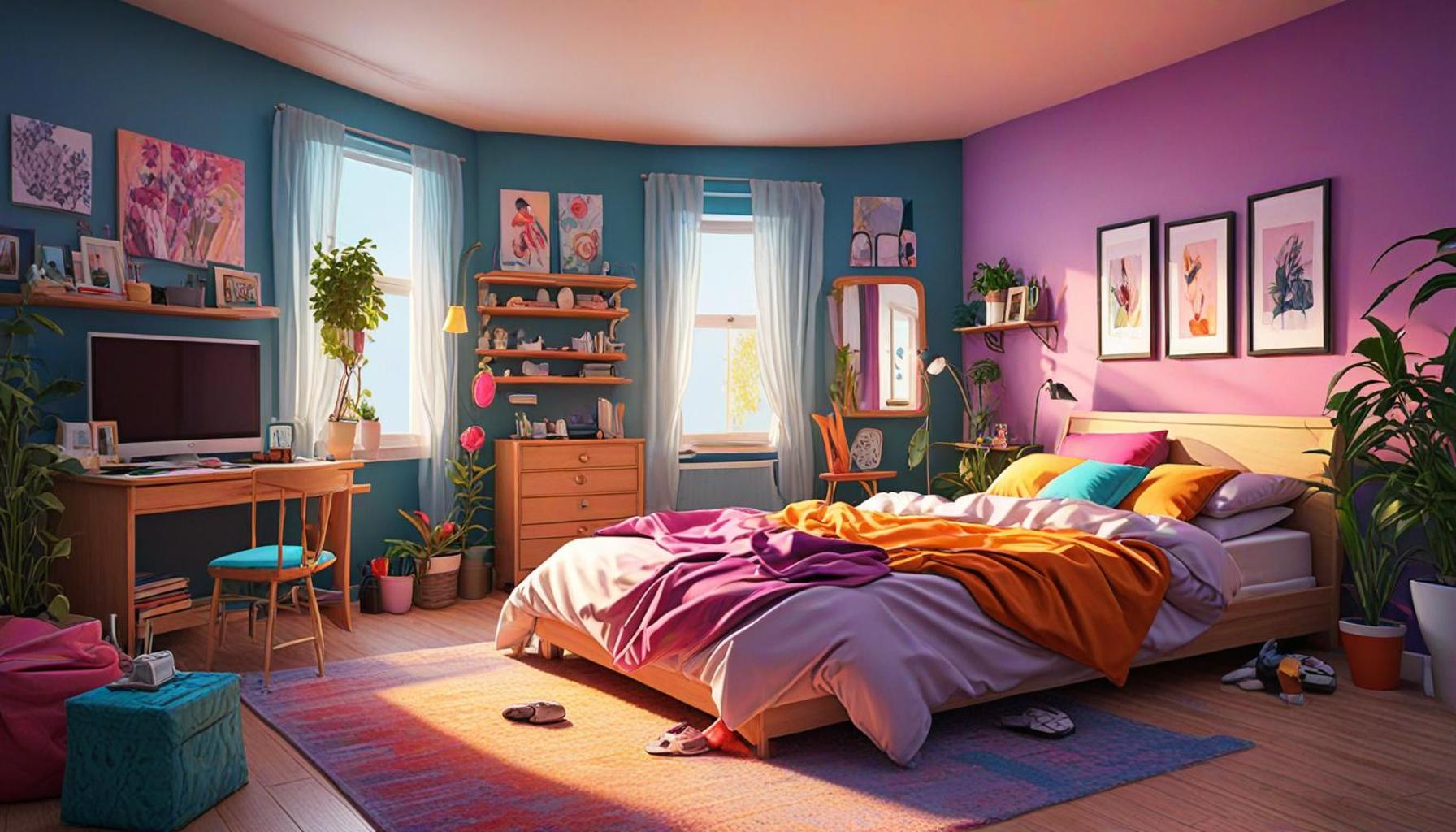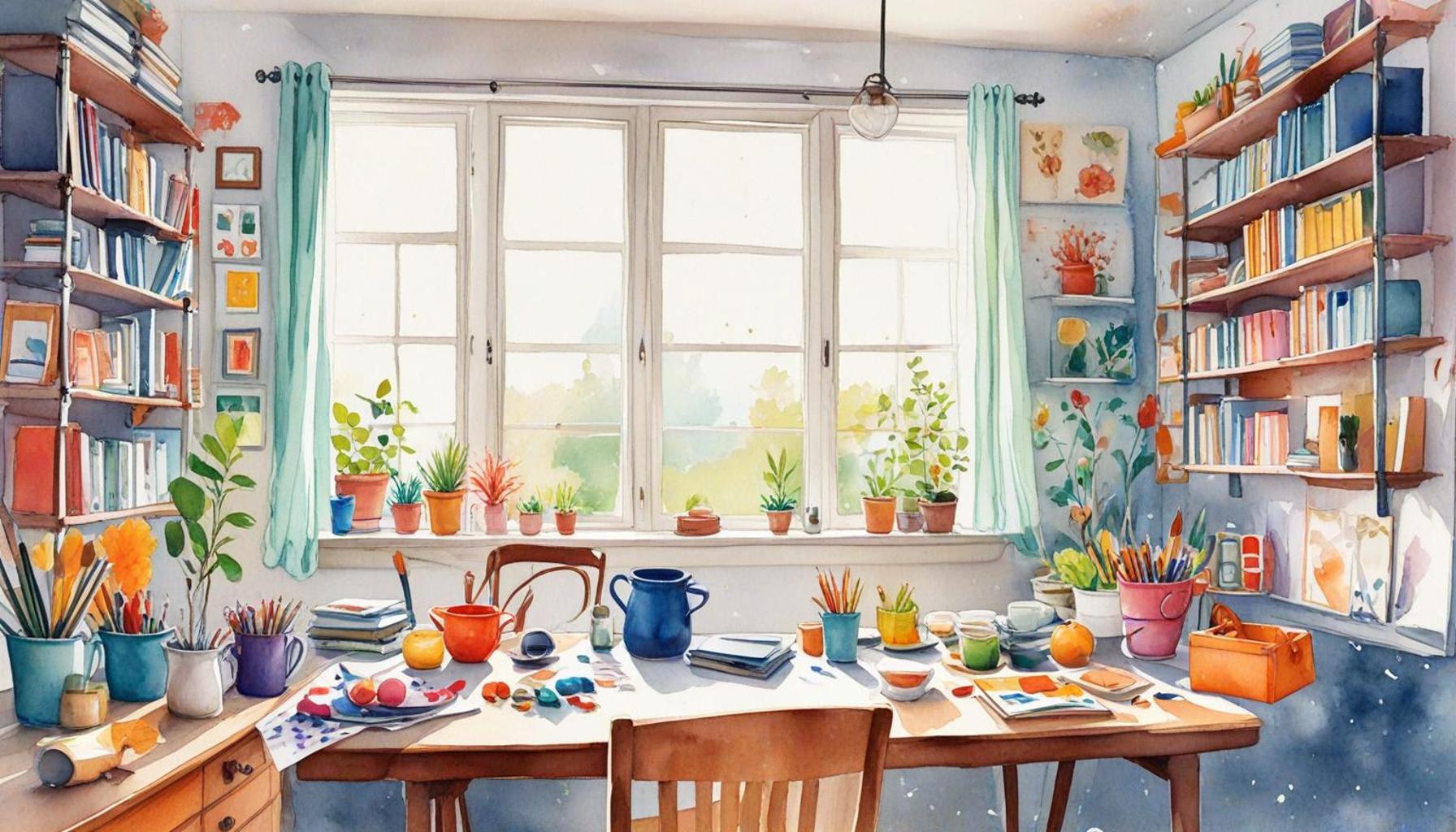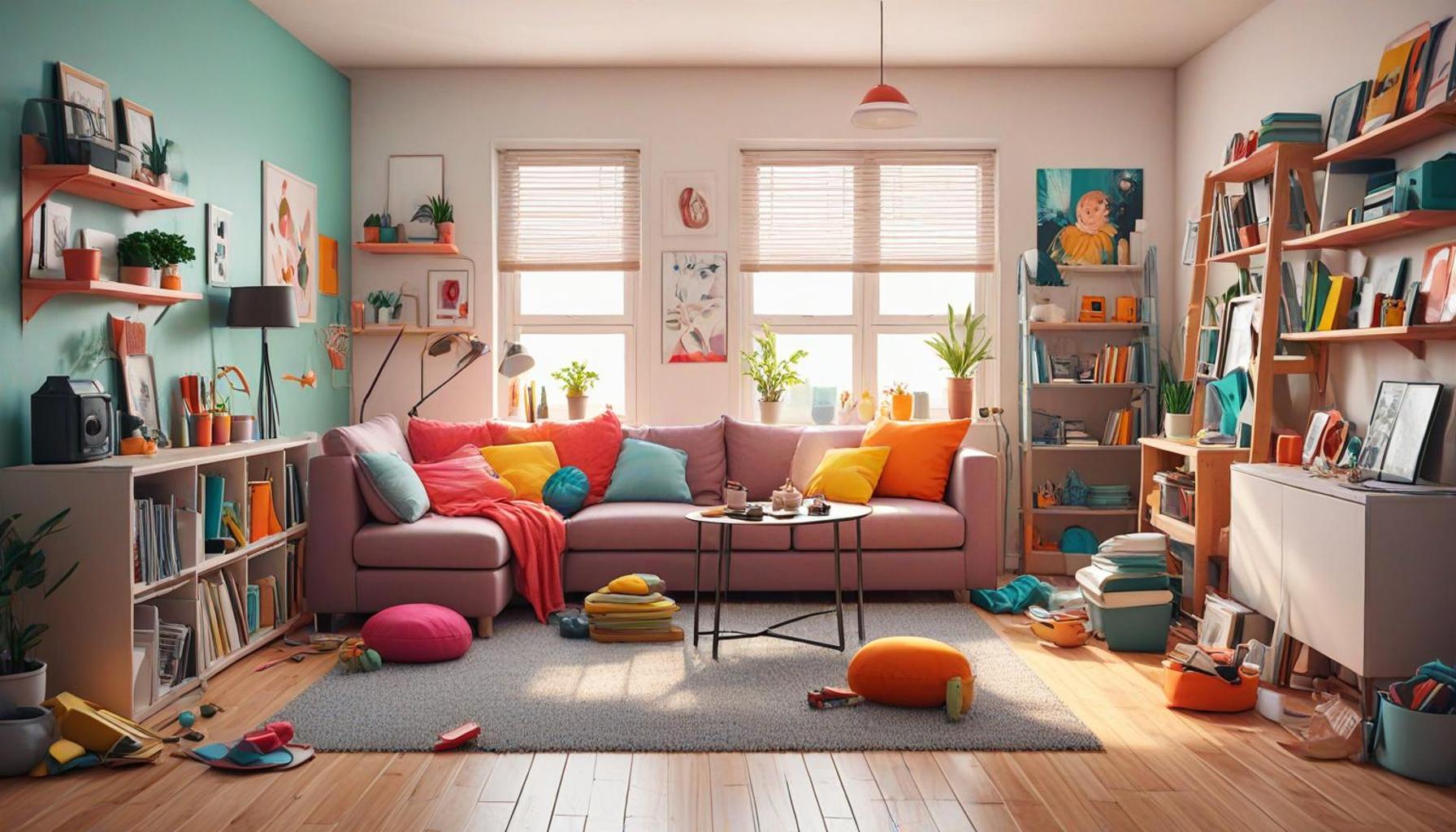Transforming the Bedroom into a Sanctuary: Tips to Reduce Clutter and Improve Sleep

Creating Your Personal Oasis
In today’s fast-paced world, it’s increasingly important to think of your bedroom as a serene retreat—a haven of peace where tranquility reigns supreme. However, clutter can disrupt this harmony, significantly impacting not just your sleep but your overall well-being and quality of life. A cluttered environment can lead to feelings of anxiety and stress, which makes it essential to transform your bedroom into a sanctuary that promotes relaxation and rejuvenation.
Understanding the Impact of Clutter
Research has shown that a chaotic environment can lead to amplified stress and anxiety levels. Clutter can create a persistent sense of overwhelm, making it challenging to unwind at the end of a long day. Here are three key areas to consider when evaluating the clutter in your space:
- Physical Clutter: Items strewn haphazardly around the room can create visual distractions that steal focus and make the space feel uninviting. Imagine trying to relax in a room filled with laundry, books, or old furniture that has nowhere to go.
- Digital Clutter: In our tech-driven age, devices and notifications interrupt our peace. The blue light emitted by screens can interfere with sleep patterns, making it harder to fall asleep and stay asleep. Consider how often you scroll through your phone in bed instead of winding down.
- Emotional Clutter: Unresolved stressors—whether from work, relationships, or life changes—can linger in your mind and manifest as cluttered thoughts. This mental baggage can significantly affect your ability to relax as you lie down to sleep.
Steps to Achieve a Peaceful Bedroom
Implementing a few strategic changes in your bedroom environment can dramatically enhance your sleep quality and overall mental health. Here are some effective tips to help you achieve that soothing atmosphere:
- Declutter Regularly: Schedule frequent clean-ups to maintain tidiness, even dedicating just 10-15 minutes each day. This can prevent the build-up of items that can overwhelm your space. You might be surprised how refreshing a little organization can feel.
- Create Zones: Designate specific areas for work, relaxation, and sleep. By separating these zones, each can serve its distinct purpose, minimizing distractions and fostering a dedicated environment for rest.
- Use Calming Colors: Opt for soft hues that promote a soothing atmosphere. Colors like light blues, greens, and neutrals can help create a tranquil feeling, promoting relaxation and better sleep. Research suggests that the colors around you can influence your mood and energy levels.
By committing to these simple strategies, you can turn your bedroom into the peaceful sanctuary you deserve. Not only will this lead to improved sleep, but it will also enhance your mental health, making each day more manageable and enjoyable. Take the first step towards creating your personal oasis today.
DIVE DEEPER: Click here to discover the significance of intention in minimalism

The Path to a Simplified Space
Creating a peaceful bedroom environment is not just about aesthetics—it’s an essential factor in cultivating good sleep hygiene and reducing daily stresses. In fact, numerous studies have shown that a clutter-free space is directly linked to improved sleep quality and mental clarity. For instance, a survey conducted by the National Sleep Foundation indicated that people who reported having organized bedrooms also reported better sleep patterns and increased feelings of wellbeing.
Evaluating Your Bedroom Clutter
Before you can transform your bedroom into a sanctuary, it’s vital to assess the type of clutter that’s present in your space. Here are some common sources of chaos that might be disrupting your peace:
- Clothing and Accessories: Piles of clothes, whether clean or dirty, can easily accumulate and become a source of stress. Consider investing in decorative bins or stylish hampers to keep items organized and out of sight.
- Unwanted Furniture: Does your bedroom have furniture that serves no purpose or feels bulky? Removing unnecessary pieces can open up the space and reduce visual clutter, making it feel more inviting.
- Personal Items: While it’s great to have cherished items in your room, too many can create chaos. Evaluate what is essential to you and consider rotating decor or limiting the number of personal items on display.
- Miscellaneous Objects: Everyday items like chargers, books, and papers can clutter your nightstand or dresser. Utilize drawer organizers and trays to consolidate these items, creating a streamlined look.
By systematically identifying these sources of clutter, you can embark on a decluttering journey that not only clears the physical space but also helps to declutter your mind. The results can be transformative—more than just a tidy room; it allows for a sanctuary where relaxation comes naturally.
Practical Decluttering Strategies
To make decluttering less overwhelming, consider these practical strategies:
- One In, One Out: For every new item you bring into your bedroom—be it clothing, accessories, or decor—commit to removing an old one. This simple rule can help keep clutter from accumulating.
- Seasonal Assessments: Every few months, reassess your belongings and donate or discard items that no longer serve you. This helps maintain an organized environment while decluttering your space.
- Box Method: Use three boxes labeled ‘keep’, ‘donate’, and ‘discard’. As you evaluate your items, place them in the appropriate box to streamline your decision-making process.
These strategies can guide you toward achieving a serene bedroom, allowing it to reflect a true sanctuary. A decluttered space not only enhances functionality but also promotes better rest, resulting in improved sleep quality and a calmer mindset. Your bedroom should be a place that nourishes your spirit, inviting you to unwind and recharge each day.
Creating a serene bedroom environment goes beyond simply tidying up. It’s about fostering a space that encourages relaxation and tranquility. One effective strategy to reduce clutter is adopting the concept of minimalism. This approach emphasizes keeping only those items in your bedroom that serve a clear purpose or bring joy, significantly reducing distractions. A clutter-free space can directly influence your mental state, ultimately leading to better sleep quality. For instance, consider investing in multifunctional furniture, like a bed with built-in storage under the mattress, to maximize space without compromising aesthetics.
Another crucial aspect involves creating a calming color palette for your bedroom. Soft, soothing hues like blues, greens, or earthy tones can significantly reduce stress levels and promote relaxation. Additionally, incorporating natural elements, such as plants or natural materials, can enhance your connection with nature, further improving your sleep environment.
Lighting also plays a vital role in transforming your bedroom into a sanctuary. Opting for adjustable lighting solutions, such as dimmable LED lights or soft bedside lamps, can help create a warm atmosphere conducive to winding down. Avoid harsh or bright white lights that might interrupt your natural circadian rhythms. Instead, choose warm whites or colored lights that mimic the sunset to signal your body that it’s time to relax.
Finally, consider integrating calming scents into your bedroom routine. Aromatherapy can be a powerful tool for reducing anxiety and enhancing sleep quality. Scents like lavender, chamomile, or eucalyptus can promote a sense of calm. Using essential oil diffusers or scented candles can help fill your space with these soothing aromas, effectively turning your bedroom into a sanctuary for restful sleep.
DON’T MISS: Click here to dive into effective home decluttering tips
Cultivating a Relaxing Atmosphere
Once you have tackled the clutter in your bedroom, the next step is to focus on creating an atmosphere that promotes relaxation and restful sleep. A sanctuary should not only be free of physical clutter but also imbued with calming elements that soothe the mind and body. Here are various ways to enhance your bedroom’s ambiance:
Lighting Matters
Lighting plays a crucial role in setting the mood for sleep. A dimly lit room, supplemented by soft, warm-toned lights, can help signal your body that it is time to unwind. Consider incorporating dimmer switches or lamps with adjustable brightness. For an added touch, you might explore smart bulbs that allow customized color temperatures, shifting from bright whites during the day to soft ambers in the evening.
Mindful Decor Choices
Decorating your space with mindful intent can create a calming effect. Color psychology suggests that hues such as blues, greens, and soft neutrals can promote relaxation. Consider repainting your walls in these soothing tones or adding decorative accents in this palette. Additionally, incorporating elements of nature—such as plants, natural wood, or water features—can further enhance tranquility. Houseplants like lavender or peace lilies not only beautify your space but also help purify the air, contributing to a healthier sleep environment.
The Power of Aromatherapy
Fragrance can have a profound impact on your mood and sleep quality. Essential oils, such as lavender and chamomile, are known for their calming properties. You might consider using a diffuser or adding scented candles to your nighttime routine. Not only do these scents create a serene atmosphere, but they can also help signal to your brain that it is time to relax. A study published in the Journal of Clinical Psychiatry noted that individuals exposed to soothing scents reported lower stress levels and a better ability to manage anxiety.
Sound Experiences
The type of sounds that fill your bedroom can also influence your ability to relax and fall asleep. Ambient noises like gentle rainfall, the ocean’s waves, or white noise can provide a comforting backdrop for sleep. Many turn to sleep apps or devices that offer a variety of soundscapes tailored to enhance relaxation. Research published in the journal Frontiers in Psychology indicates that soothing sounds, especially those mimicking nature, can improve sleep duration and quality.
Establishing a Sleep Routine
Creating a consistent night-time routine is vital to transforming your bedroom into a sleep sanctuary. Engaging in calming activities before bedtime, such as reading, journaling, or practicing mindfulness meditation can help signal to your body that it is time to wind down. Maintaining a regular sleep schedule—going to bed and waking up at the same time every day—can also significantly improve your overall sleep quality, as suggested by the National Sleep Foundation. A predictable routine helps your body regulate its internal clock, leading to more restful and restorative sleep.
By focusing on these aspects of your bedroom environment, you not only reduce clutter but also foster a serene setting that promotes quality sleep. Creating a sanctuary is a multifaceted process that relies heavily on the interplay of soothing decor, lighting, scents, sounds, and personal routines. The result is a space that invites unwinding and rejuvenation, allowing you to wake up refreshed and ready to meet each new day head-on.
DISCOVER MORE: Click here to boost your productivity
Conclusion
Transforming your bedroom into a sanctuary is both a journey and a crucial step toward enhancing overall well-being. A clutter-free environment sets the foundation for restorative sleep, allowing deeper relaxation and a reprieve from the chaos of daily life. By thoughtfully considering elements such as lighting, decor, aromatherapy, and soundscapes, you can cultivate a personal haven that supports the rejuvenation your body craves.
Moreover, establishing a consistent sleep routine reinforces your body’s natural rhythms, promoting better sleep hygiene. Research underscores the connection between a well-designed environment and improved sleep quality, making small adjustments impactful. Just as a gardener nurtures their plants to flourish, so too can you nurture your bedroom to flourish into a peaceful retreat.
As you embark on this transformative process, remember that the key lies in personalizing your space to suit your preferences and needs. Small changes can lead to significant improvements, and discovering the ideal balance of tranquility in your bedroom can be an enlightening experience. Ultimately, creating a sleep sanctuary equips you to face each day armed with energy and clarity, as sleep becomes not just a necessity but a cherished part of your self-care routine. Dive deeper into the art of bedroom transformation, and see the difference it can make in your life!



